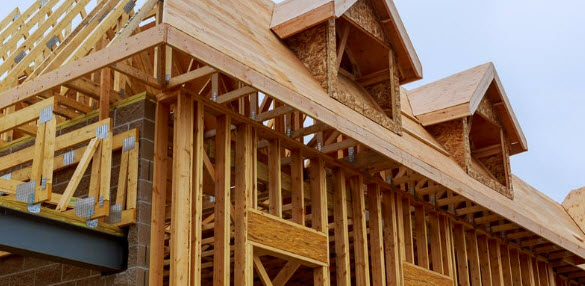Learn about conventional loans, one of the most popular mortgage options for homebuyers. This guide covers how conventional loans work, their requirements, and 2023 loan limits, helping you make an informed decision when purchasing a home.
What is a Conventional Loan?
A conventional loan is a mortgage that is not backed by a government entity like the Federal Housing Administration (FHA) or the Department of Veterans Affairs (VA). Instead, it is offered through private lenders, such as banks or credit unions, and meets the lending standards set by Fannie Mae and Freddie Mac.
Conventional loans come in two types:
- Conforming Loans – These loans meet the standards set by Fannie Mae and Freddie Mac and adhere to specific loan limits.
- Non-Conforming Loans – Also known as jumbo loans, these exceed the conforming loan limits and typically come with stricter qualification requirements.
Conventional Loan Requirements
To qualify for a conventional loan, borrowers must meet specific eligibility criteria. Here’s what lenders typically look for:
1. Credit Score
Most lenders require a minimum credit score of 620 for conventional loans. However, borrowers with scores of 700 and above generally qualify for the best interest rates.
2. Down Payment
One of the key benefits of a conventional loan is flexibility with the down payment. While the standard down payment is 20% of the home’s purchase price, many lenders allow down payments as low as 3% to 5% for well-qualified borrowers. Keep in mind that if you put down less than 20%, you’ll likely need to pay for private mortgage insurance (PMI) until you reach 20% equity in your home.
3. Debt-to-Income (DTI) Ratio
Lenders will examine your debt-to-income ratio (DTI) to ensure you can afford the monthly mortgage payments. Most lenders prefer a DTI ratio of 43% or lower, meaning that your total monthly debt obligations, including the mortgage, should not exceed 43% of your gross monthly income.
4. Employment History and Income
To qualify for a conventional loan, you’ll need to provide proof of stable employment and sufficient income to cover your mortgage payments. Lenders typically prefer borrowers who have at least two years of consistent employment history.
5. Property Appraisal
A conventional loan requires a home appraisal to verify that the property’s value is equal to or greater than the loan amount. This protects both you and the lender by ensuring that the property is worth the amount being borrowed.
Conventional Loan Limits
The Federal Housing Finance Agency (FHFA) sets limits on how much you can borrow with a conventional loan. These loan limits are adjusted periodically to reflect changes in the housing market, particularly in areas where home prices are higher. These limits apply to conforming loans, which meet the guidelines set by Fannie Mae and Freddie Mac.
Baseline and High-Cost Loan Limits
There are two main categories of loan limits:
- Baseline Loan Limits: These apply to most of the country and set a standard limit for how much you can borrow.
- High-Cost Area Limits: In areas where property values are significantly higher, the loan limits are increased to reflect the higher cost of homes.
For most areas, the baseline limit typically applies to the majority of home purchases. However, in high-cost areas—such as parts of California, New York, and Washington, D.C.—the limits are adjusted upward to accommodate higher real estate prices.
General Loan Limit Guidelines
- Baseline Conforming Loan Limits: Typically, the standard limit for single-family homes falls within a specific range depending on market conditions.
- High-Cost Areas: Loan limits can be significantly higher in areas with elevated housing prices, allowing borrowers to secure financing without needing a non-conforming (or jumbo loan) product.
Non-Conforming (Jumbo) Loans
If your mortgage exceeds the conforming loan limit, you will need to apply for a non-conforming loan, also known as a jumbo loan. These loans are designed for higher-priced homes and come with stricter qualification requirements, such as higher credit scores and larger down payments.
Understanding whether your home falls under the baseline or high-cost area limits will help you navigate loan options and avoid the additional requirements of a jumbo loan.
Pros and Cons of Conventional Loans
Pros | Cons |
Competitive interest rates | Higher credit score requirement than government-backed loans |
Flexibility with down payment options | Requires private mortgage insurance (PMI) for down payments less than 20% |
No upfront mortgage insurance premium | Stricter qualification standards |
Can be used for primary homes, second homes, and investment properties | May require higher down payment in non-conforming (jumbo) loans |
Explore conventional loans using your Home Wealth Blueprint, crafted with real-time property data from Home Loan Advisor. Get personalized mortgage options and home wealth strategies that align with your financial profile.
FAQs
- What credit score do I need for a conventional loan?
Most lenders require a minimum credit score of 620, but borrowers with higher scores (700+) typically receive better interest rates. - What are the conventional loan limits for 2023?
The baseline loan limit is $726,200 for most of the U.S. In high-cost areas, the limit goes up to $1,089,300. - Do I need to pay PMI with a conventional loan?
If you put down less than 20%, you’ll need to pay private mortgage insurance (PMI) until you reach 20% equity in the home. - Can I qualify for a conventional loan with a low down payment?
Yes, some lenders offer conventional loans with down payments as low as 3% for qualified borrowers, though PMI is required. - What’s the difference between a conforming and non-conforming loan?
Conforming loans meet Fannie Mae and Freddie Mac guidelines and stay within loan limits, while non-conforming (jumbo) loans exceed these limits and have stricter qualifications. - Is a conventional loan better than an FHA loan?
Conventional loans may offer lower interest rates and no upfront mortgage insurance premiums, but FHA loans are more forgiving for borrowers with lower credit scores or smaller down payments. - Can I refinance a conventional loan?
Yes, you can refinance a conventional loan if you meet the lender’s requirements. Refinancing may help you secure a lower interest rate or reduce your monthly payment. - Can I use a conventional loan to buy a second home or investment property?
Yes, conventional loans can be used to finance second homes or investment properties, unlike FHA or VA loans, which are limited to primary residences. - What’s the maximum DTI for a conventional loan?
Most lenders prefer a DTI ratio of 43% or lower, though some may accept slightly higher ratios depending on your credit score and financial profile. - How can I avoid PMI on a conventional loan?
To avoid PMI, you’ll need to make a down payment of at least 20% or reach 20% equity in your home.
Conclusion
Conventional loans offer homebuyers flexibility and competitive terms, making them a popular choice for many. By understanding the conventional loan requirements and the conventional loan limits for 2023, you can better assess whether this type of mortgage is right for you. Remember to shop around for the best rates and terms to ensure you’re making the most informed decision as you embark on your home-buying journey.



